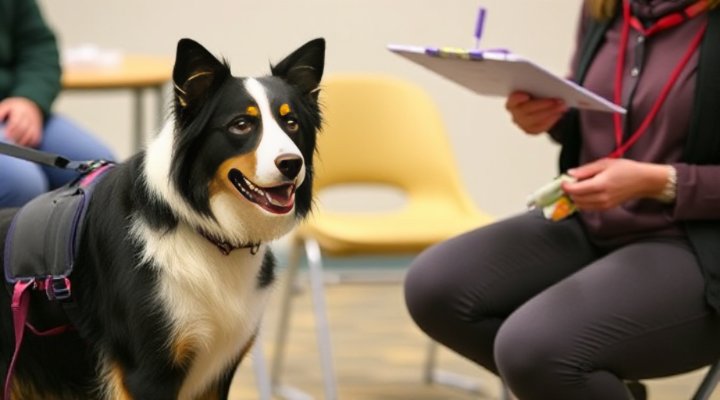Training a therapy dog is one of the most fulfilling experiences a pet owner can undertake. Not only does it strengthen the bond between you and your furry companion, but it also allows your dog to bring comfort and joy to those who need it most. Therapy dog training is specialized preparation that equips dogs with the skills to provide emotional support in hospitals, schools, and care facilities. In other words, it’s about transforming your pet into a four-legged therapist!
What Makes a Good Therapy Dog?
First and foremost, not every dog is cut out for therapy work. The ideal therapy dog has a calm temperament, is friendly with strangers, and can remain composed in unpredictable environments. For example, breeds like Golden Retrievers, Labradors, and Cavalier King Charles Spaniels often excel in this role due to their gentle nature. However, any breed or mix can become a therapy dog if they have the right personality.

Above all, your dog should enjoy human interaction. If your pet gets overly excited or anxious around new people, you might want to consider socialization training first. Meanwhile, basic obedience is crucial—your dog should master commands like ‘sit,’ ‘stay,’ and ‘leave it’ before beginning therapy dog training.
Therapy Dog Training Steps
1. Master Basic Obedience
Before diving into specialized therapy dog training, ensure your dog has solid basic obedience skills. This includes responding reliably to commands even in distracting environments. If you’re unsure where to start, our guide on basic obedience commands can help.

2. Socialize Extensively
Therapy dogs encounter all sorts of people, equipment, and environments. Consequently, they need to be comfortable with wheelchairs, walkers, loud noises, and sudden movements. Start by exposing your dog to different settings gradually, always pairing new experiences with positive reinforcement.
3. Practice Specific Therapy Skills
Unlike service dogs, therapy dogs don’t perform tasks but instead provide comfort through their presence. That said, they should be trained to:
- Remain calm when being petted by multiple people
- Ignore food and medical equipment on the floor
- Stay relaxed during prolonged handling
- Navigate crowded spaces confidently

Getting Certified
Once your dog has mastered these skills, the next step is certification. Organizations like Therapy Dogs International or Pet Partners evaluate dogs through tests that simulate real-world scenarios. Most importantly, your dog will need to demonstrate impeccable manners and temperament.
For instance, during evaluation, your dog might encounter:
- Loud noises like dropped crutches
- Crowds of people wanting to pet simultaneously
- Food left within reach
- Medical equipment like wheelchairs

After passing, you’ll receive official identification, and you can start visiting facilities. Remember, certification typically needs renewal every 1-2 years, so keep up with your dog’s training.
The Joy of Therapy Work
There’s nothing quite like seeing the smile on a child’s face when your therapy dog enters their hospital room or watching an elderly resident light up during a visit. These moments make all the training worthwhile. Furthermore, therapy work can be incredibly rewarding for your dog too—they get endless pets and affection!

If you’re interested in learning more about the certification process, check out our comprehensive guide on therapy animal certification. Meanwhile, remember that while therapy dog training requires commitment, the positive impact your dog can have on people’s lives is immeasurable.
Related Keywords: therapy dog, emotional support animal training, service dog vs therapy dog, therapy dog requirements, how to certify a therapy dog

